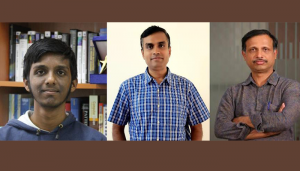Researchers at IIIT Hyderabad have developed an automatic system for the diagnosis and prognosis of cancer. The deep learning networks can automatically classify subtypes of renal cancer and predict patient survival outcome from digital histopathological images.
The foray of Computer Vision in the medical healthcare space has turned diagnostic imagery on its head.
Convolutional Neural Networks (CNNs) can automatically detect the presence of tumour and subtypes of kidney cancer from digital slide images of biopsies.
The model can also generate a risk index based on tumour shape and nuclei features thereby predicting patient survival outcomes.
Plans afoot to build a digital repository of histopathological images of Indian cancer patients
To understand the complex behavior of diseases, interdisciplinary teams of scientists have been exploring biological information at multiple scales from molecules to whole-body. For some of the researchers at the Centre for Computational Natural Sciences and Bioinformatics (CCNSB), IIIT Hyderabad, this means building computational models to identify anomalies in datasets of cancer patients.
Computer Vision in Medical Diagnostics
A cancer diagnosis is typically arrived at by first looking at reports of imaging tests such as the CT Scan or an MRI, followed up with a microscopic analysis of the affected tissue sample, known as a biopsy. Biopsies, though invasive, help to conclusively determine cancerous growth. “Analysis of these histopathological images (that is, of sample tissues) is something we hadn’t done before and hence we collaborated with Prof. C.V Jawahar from the Center for Visual Information Technology,” says Dr. Vinod P K from CCNSB. The aim was to see how a computer can interpret those images. Histological images contain markers of disease progression and phenotypic information that can have diagnostic and predictive values. A manual microscopic analysis takes considerable amount of effort and time. And in cancer outcomes, a timely detection and diagnosis is paramount which is possible by a machine. A machine can also step in where there are differing opinions among pathologists. “When opinions are divided, there is a lot of subjectivity and it varies from pathologist to pathologist. A computer-aided interpretation could help in resolving these sorts of issues by aiding and not replacing the pathologist,” asserts Dr. Vinod.

Sairam Tabibu, Dr. Vinod P K, Prof. C V Jawahar
Research Findings
Speaking about the study itself, Dr. Vinod says that they focused on kidney cancer because it is among the most common cancer in both men and woman. With the help of convolutional neural networks, they were able to distinguish renal cancers from normal tissue. Next, the model was able to automatically classify the renal cancer subtypes. Finally, from the subtype classifications, they were able to identify features that could predict survival outcomes. While the model achieved over 90% accuracy for determining whether the histopathological images was a tumour or not, the model achieved a 94% accuracy in determining the subtypes of cancer. Survival prediction was done based not just on nuclei features but also on tumour shape features and found to be significant. Apart from this, we also dealt with the issue of tissue of origin. When we take a tissue sample for biopsy, we know where we’re taking it from but we’re not sure of the site of origin. We were able to show that there is site of origin difference between renal cancers.
Indian Repository
Digital histopathological images for the study were obtained from the Cancer Genome Atlas Project. It’s a project funded by the US Government that has catalogued and characterized 33 different types of cancers using genome sequencing. The IIITH research team now plans on expanding the scope of research by working with Indian cancer data sets, beginning with lung cancer which is most prevalent in the country today. In the Indian context, this is a bit more challenging in that digital images of tissue samples are simply not available. The team is in talks with pathologists of various hospitals in the city to popularize scanning and digitizing microscopic slides. “At the institute-level too, we want to aggressively push in this direction by hiring post-doctoral students to this project,” says Dr. Vinod. There’s tremendous scope for this project and with appropriate funding coming in from the Indian government, a database of various cancers from Indian patients seems imminent in the coming years.
More details on the research at https://www.nature.com/articles/s41598-019-46718-3.epdf?author_access_token=3lD7uVcmFAaSgWfV6zI9MdRgN0jAjWel9jnR3ZoTv0MnpeSM_nau0DO7OwrtTzDfEqV7rkxzyq_4pgZI4ouKzjyY7cdGm1hJDW19SbA6RZ4HcqzBgdluD3FzsVRG9ssHCwuHeerbx9N9n6cXqA-pw%3D%3D


